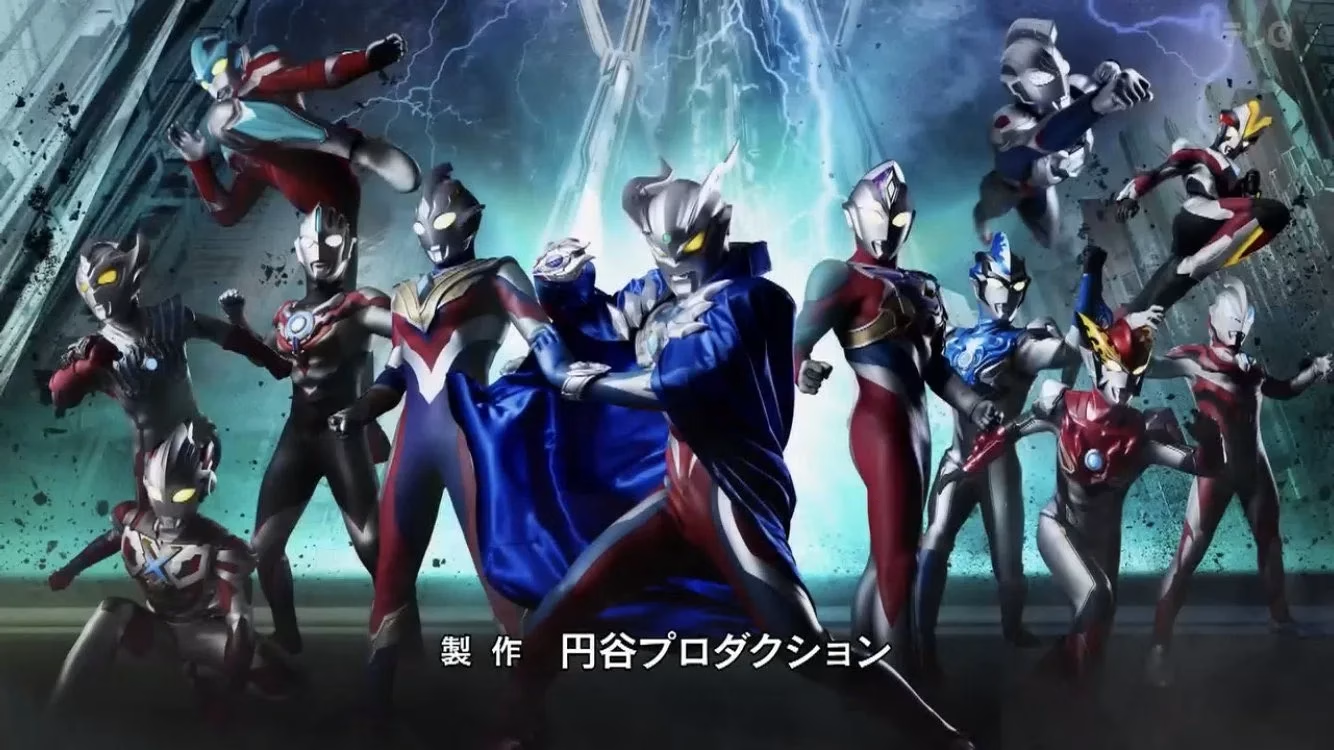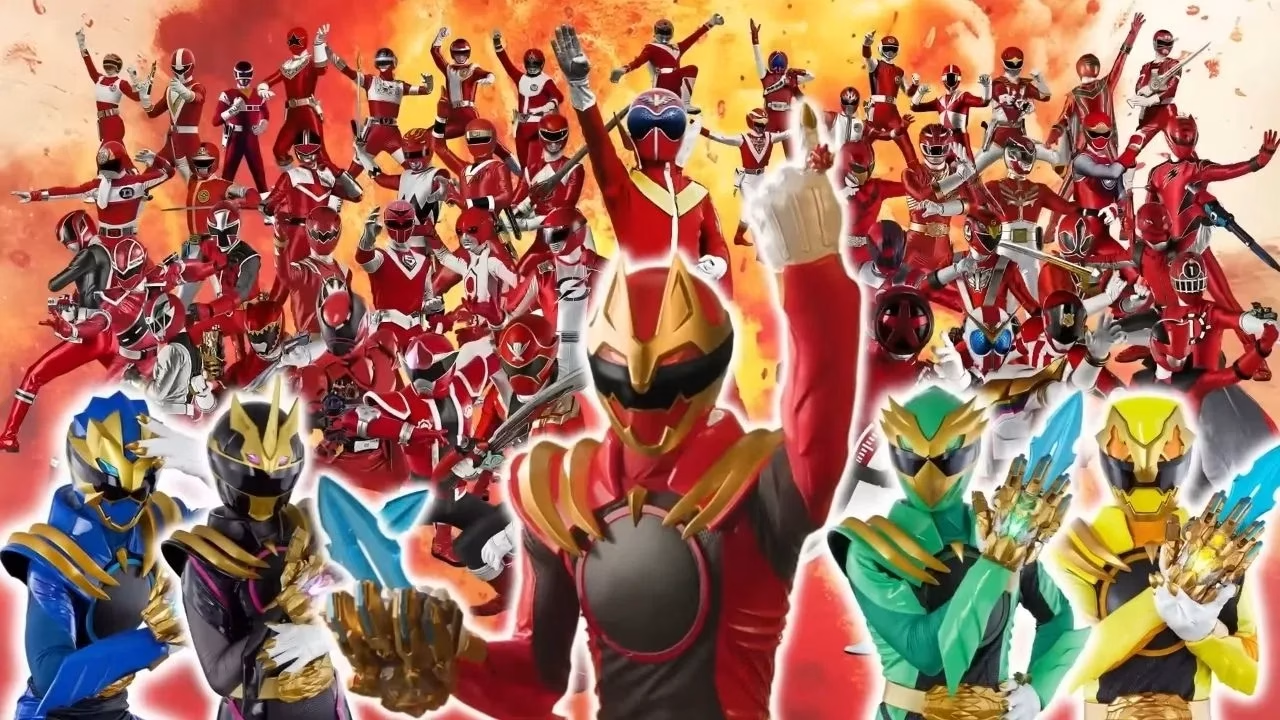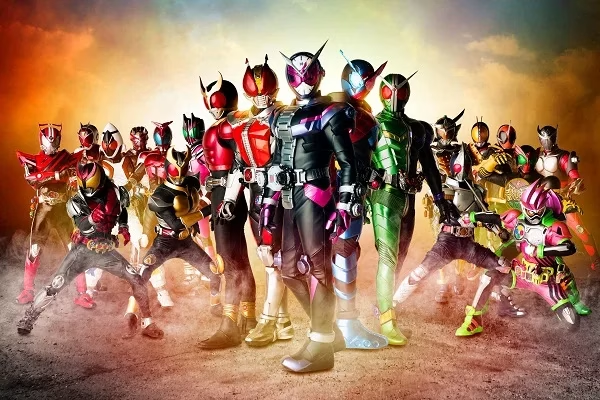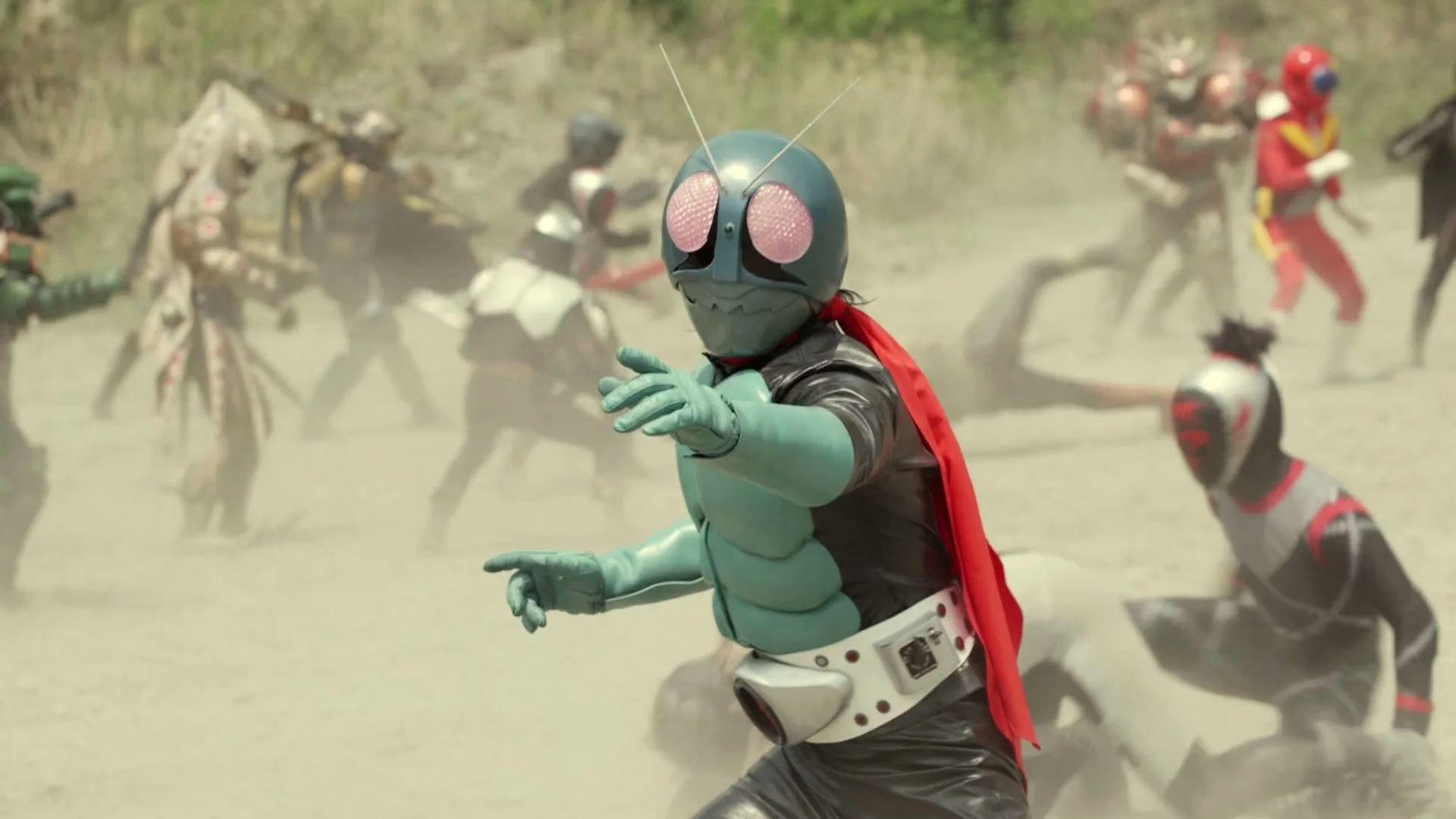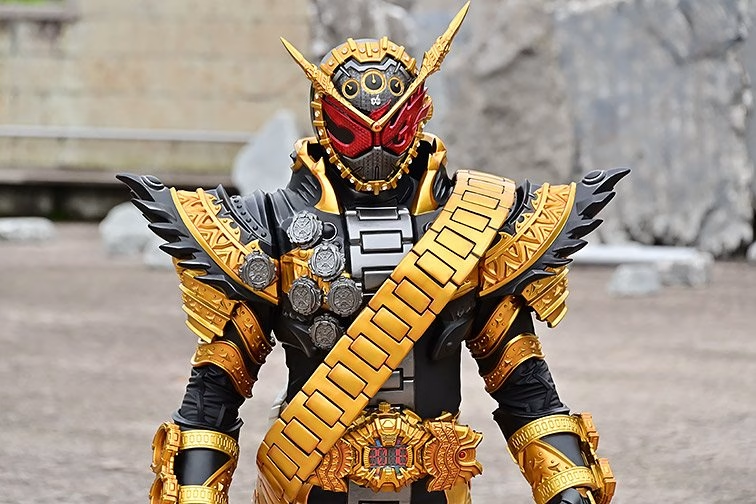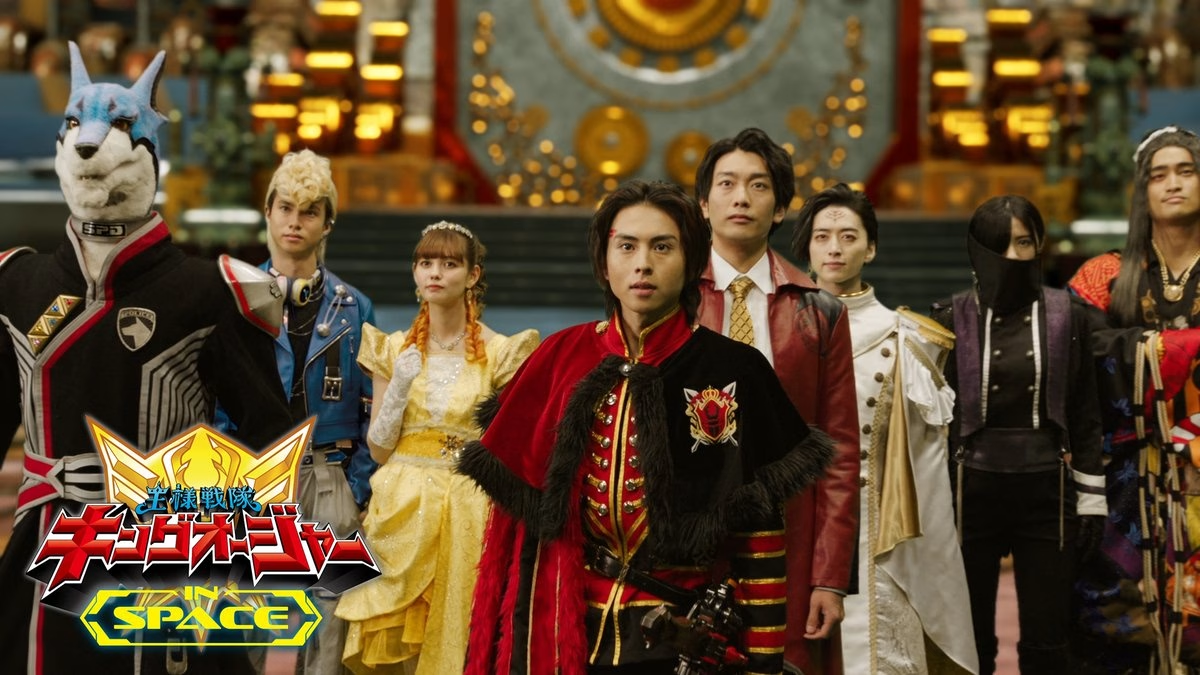The Ultra Series, or better known as Ultraman, is a giant Japanese franchise that is very popular and has gone global. Created by Eiji Tsuburaya and produced by Tsuburaya Productions, the series first aired in 1966 under the title “Ultra Q”. Since then, the Ultra series has grown into a cultural phenomenon that has spawned numerous sequels, spin-offs, films, manga, anime, and other merchandise.
In this article, we will discuss the Ultra Series in full, starting from its history and origins, the various Ultraman characters and antagonists that appear, to its influence on Japanese and world popular culture. Let's explore deeper into the world of giant heroes who are always ready to protect Earth from the threat of evil monsters.
Ultra Series Summary
The franchise is typically based around humans who attain the powers of giant light-based alien heroes from the Land of Light in the M78 Nebula, gaining the ability to transform into said creatures to face off against fifty-foot tall kaiju/alien attacks, often with the help of a scientific paramilitary organization that has many cool and futuristic gadgets throughout the series' storyline.
Ultra Q was a tokusatsu series in Japan, one of the first to bring daikaiju to the screen. Special effects expert Eiji Tsuburaya was a major part of the series. It was planned to introduce a giant hero to fight monsters, similar to the Showa Godzilla films. The hero went through many stages, originally intended to be a bird-man named Bemular, with the design later becoming the Hydra monster. Eventually, he evolved into the famous red-and-silver hero. They introduced the titular hero Ultraman in the second series, which enjoyed great success and started the henshin hero genre.
Many sequels would follow, including Ultraseven, a standalone series that was intended to have no connection to Ultra Q and Ultraman except that Ultraseven came from the same nebula as Ultraman; however, after Eiji Tsuburaya's death in 1970 this was retconned in Return of Ultraman. This series was the first official Ultra Series entry in three years. It was managed by Hajime Tsuburaya, Eiji's son and the songwriter for most of Ultraman's theme songs, using the stage name "Tokyo 1". It was also a rather major tonal shift as the defense team members were not developed in favor of the first supporting family of the Ultraman Series, the Sakata family. Return of Ultraman also brought Ultraman and Ultraseven into the same universe.
Partly as a result of the success of the first three installments of the Ultra Series, the tokusatsu genre experienced a boom in Japan, with a variety of new television series emerging to take advantage of the growing market. Due to the success of the Kamen Rider franchise, which began in 1971 as part of the first wave of the tokusatsu boom, the new Ultra Series entry, Ultraman Ace, featured the first major antagonist similar to the Shocker Great Leader, Yapool. The show was much more bloody, which was met with mixed reception, so the next series, Ultraman Taro, changed tack and featured a more family-friendly tone, while also largely completing the series' transition into a pure action and science fiction franchise.
Ultraman Taro was one of three series created for Tsuburaya Productions' 10th anniversary, the other two being Fireman and Jumborg Ace . This series defined the Ultra race, giving more lore than Ultraman Ace and often featuring the Ultra Brothers in it. Some fans of the Ultra Series were upset with the lighthearted tone of Ultraman Taro , so Ultraman Leo decided to go very dark with several on-screen human deaths and gruesome alien deaths.
The first 39 episodes of Ultraman Leo featured Ultraman Leo as Gen Otori training with Ultra veteran Dan Moroboshi, due to his Ultra Eye being damaged. However, the last 12 episodes decided to introduce the antagonist, the Black Directive, for a second time, most likely trying to compete with the equally dark series Kamen Rider Amazon. However, the kaiju genre began to die out as human-sized heroes and anime became more popular, causing the Ultra Series to go on a three-year hiatus; Kamen Rider Stronger even replaced the Ultraman Leo series on TBS.
In 1979, the Ultra Series had its first anime series The☆Ultraman which was not connected to the Showa continuity. In 1980, however, kaiju and sci-fi began to surge once again due to the new decade so Ultraman 80 premiered. Ultraman 80 first wanted to appeal to children in high school, so the first 12 episodes showed Takeshi Yamato as a science teacher, a member of UGM, and Ultraman 80. The school plot was dropped in episode 13 to keep Ultraman true to the franchise's roots. Ultraman 80 was the first Ultra Series entry to have a direct ending theme. Ultraman then went on hiatus in the early 1990s.
While many of the aforementioned imitators were quite popular in Japan, no other kaiju-based superhero series has become as beloved and recognized worldwide as the Ultra Series, with some series even being distributed outside of Japan. The foreign series Ultraman: The Ultimate Hero and Ultraman: Towards the Future were produced and dubbed into Japanese with mild success in Japan. In 1993 after Ultraman: Towards the Future debuted in Japan on NHK and after Kamen Rider ZO debuted, Toei and Tsuburaya co-produced Ultraman vs. Kamen Rider to combine the popular franchises.
The series returned with the first Japanese-produced Ultra Series entry with Ultraman Tiga , which was well-received. Ultraman Dyna and Ultraman Gaia followed, both of which were also successful. After the direct-to-video Ultraman Neos in 2000, the series saw Ultraman Cosmos , the longest Ultra Series entry to date at 65 episodes, with 10 originally compiled due to the scandal with Ultraman Cosmos but later aired after the scandal was over. Later, when Tsuburaya released the darker, more adult-oriented Ultraman Nexus , the series suffered a huge ratings loss due to it being scheduled at a time when only children could watch the series. By the time it was finally released to its intended audience, it was too late to save the ratings.
Returning to the franchise's roots with the kid-friendly Ultraman Max saved it, but it still suffered from lower ratings. After the subsequent 40th anniversary series, Ultraman Mebius , only two new entries were made for the Ultra Series during the Heisei era: Ultraseven X , and two seasons each for Ultra Galaxy Mega Monster Battle , which were followed by the Ultraman Zero and Ultra Zero Fight trilogies. Then in 2013, to celebrate Tsuburaya Productions' 50th anniversary, the self-titled "New Generation Era" was formed as part of the late Heisei era, introducing several series such as Ultraman Retsuden , Ultraman Ginga , and its successors.
These “New Generation” series were more toy-oriented and shorter, introduced new collectibles and gimmicks, and none of them had more than 30 episodes. This drastic change disappointed some long-time fans as the newly introduced collectibles seemed out of place and ratings suffered, although they rebounded as sales increased as more Ultra Series series were produced, especially with the 50th anniversary series, Ultraman Orb.
Starting with the Ultra Series' 55th anniversary, three distinct eras have emerged to depict the franchise's storied history. These three eras of storytelling each have a distinct feel and style that resonate with their respective eras, but are interconnected through the Ultra Series' unique spirit of fantasy storytelling.
Showa Ultra Series
The First Generation, also known as the Classic Ultraman era, began with 1966's Ultra Q, which included major works of science fiction fantasy that would set the course for the franchise for years to come. With an emphasis on elements of mystery and strangeness, the storyline focused on explaining and solving these strange phenomena with the power of science. This era saw the rise of classic heroes, such as Ultraman and Ultraseven, who worked together with humanity to uncover the unknown and protect them from the Kaiju. The universe maintained a strong continuity, with heroes from previous series returning to aid their successors, and of course, the formation of the fan-favorite group known as the Ultra Brothers.
The three works from “Q” to “Seven” are collectively referred to as the “First Ultra Series,” a name that later became the common name, but this is only the current name and not the name used at the time of broadcast.
Starting with the appearance of Ultraman and Ultra Seven as guest stars in “Return of Ultraman,” then the “Ultra Brothers” setting was established in “A,” and further developed in “Taro,” launching the “Ultra Family” line. Thanks to this initiative, along with the Kamen Rider series, it became the core of Kaiju Boom.
This era not only includes series that aired during the Showa era, but also includes international productions such as Ultraman: The Adventure Begins , Ultraman: Towards the Future , and Ultraman: The Ultimate Hero .
After the end of “80,” no television series were produced for 16 years until “Ultraman Tiga” began in 1996. Hideaki Tsuburaya, who served as president of Tsuburaya Productions, cited a number of reasons why the television series were no longer produced: the deterioration of relations between Tsuburaya Productions and TBS during “80” meant that they were no longer able to secure broadcast time slots; Tsuburaya Productions’ financial difficulties led to the disbandment of its production department; and the company’s stabilization of its copyright revenues meant that the company was reluctant to produce new series.
Heisei Ultra Series
The Second Generation, also known as the High Concept era, began with 1996's Ultraman Tiga , revealing a more fantastical and adventurous spin on the Ultraman concept. Touching on the plight of non-human species coming into contact with the Giants of Light, this era promoted diversity of beliefs and ideas. Each series starred Ultra Heroes that were significantly different from those that came before, featuring standalone universes that skewed away from the single canonical universe of the previous generation.
This era includes not only the Ultra Series series that aired during the early years of the Heisei era (1996 onwards, from Ultraman Tiga to Ultraman Mebius), but also adjacent spin-offs, including Ultraman Nice, Ultraman Zearth, Ultraman Neos, and Ultra Galaxy Mega Monster Battle.
The worldview was completely revamped from the Showa Ultra Series, and the previous setting of “alien from the M78 Nebula” was also abandoned, with Ultraman in each work being described as “a young man from Earth who transformed into a giant of light.” The new system also introduced a new type change feature, where abilities change depending on appearance.
Although only “Tiga” and “Dyna” share the same worldview, “Gaia” was also produced and achieved good results in terms of TV ratings and toy sales. The three works are known as the “Heisei (Ultraman) Trilogy”. In celebration of Ultraman Tiga’s 25th anniversary, the three series are now known as TDG.
In 2001, marking the 100th anniversary of Eiji Tsuburaya's birth and the 35th anniversary of the Ultra Series, the Ultra Series was relaunched with the Mainichi Broadcasting System's production of “Cosmos.”
The next series, “Nexus,” was produced as part of the “ULTRA N PROJECT,” whose main goal was to “create a new image of Ultraman.” From then on, production was handled by Chubu Nippon Broadcasting (CBC), a TBS affiliate in Nagoya. After “N PROJECT” ended, “Max” was broadcast, based on the concept of “returning to the roots,” and CBC continued to be in charge of production.
“Ultraman Mebius,” produced to commemorate the series’ 40th anniversary, returns to its well-received roots in “Max” and continues the worldview of the Ultraman Showa series, featuring all of the Ultramen from the Showa era, as well as popular monsters and aliens.
All three Nexus, Max and Mebius series struggled commercially in terms of ratings and toy sales. Hideaki Tsuburaya, president of Tsuburaya Productions, cited the following as the main reasons: after Nexus, the show began broadcasting from a local Nagoya station, meaning that it was not promoted sufficiently in the Tokyo metropolitan area, leading to poor ratings and difficulties in securing sponsorships, meaning that the show's slots could no longer be sold.
Ultra Galaxy Mega Monster Battle was originally not broadcast on terrestrial television, but on BS11 . It was then broadcast on TV Tokyo from 2009 to 2010, and the subsequent TV series were also broadcast on the same network.
The Third Generation, also known as the New Generation Heroes era, began with Ultraman Ginga in 2013 and established a new identity for the Ultraman Series while following in the footsteps of its predecessors’ best qualities. Distinguishing itself with a long-running serialized storyline and a larger, interconnected continuity, the focus of this era was on the friendships between Ultra Heroes, the friendships forged with humans, and the bonds of light that were passed down from each work to the next. These relationships and the strength of these bonds proved time and again to be the key to solving problems, averting crises, and overcoming the forces of darkness.
This era begins from the final years of the Heisei era, starting with the Ultraman Ginga series, and continues into the Reiwa era after the 2019 Ultraman Taiga series. This era also includes the Ultraman Zero films and various other spin-offs, such as Ultraman Regulos.
“Ultraman Retsuden” began airing in 2011, the 45th anniversary of the Ultra Series. Initially, the show mainly consisted of rebroadcasts of selected old works, special compilations, and installment broadcasts of films and videos, but after the broadcast of “Ultra Zero Fight” in 2012, the proportion of original works gradually increased, with “Ginga” in 2013, “Ginga S” in 2014, and “X” in 2015.
In “Ultraman Retsuden,” Ultraman Zero was the main navigator, but from “New Ultraman Retsuden” onward, various characters have taken over the role. Since the main broadcaster is TV Tokyo, which has several affiliate stations, only a few areas simulcast the show with the original broadcast. However, once the broadcast ends, the show will be streamed online for free on Ultraman’s official YouTube channel.
Since “Orb,” which commemorated the 50th anniversary of the Ultra Series, the program slot has continued by alternating the “Chronicle” series in the first half of the year and the new series in the second half of the year.

